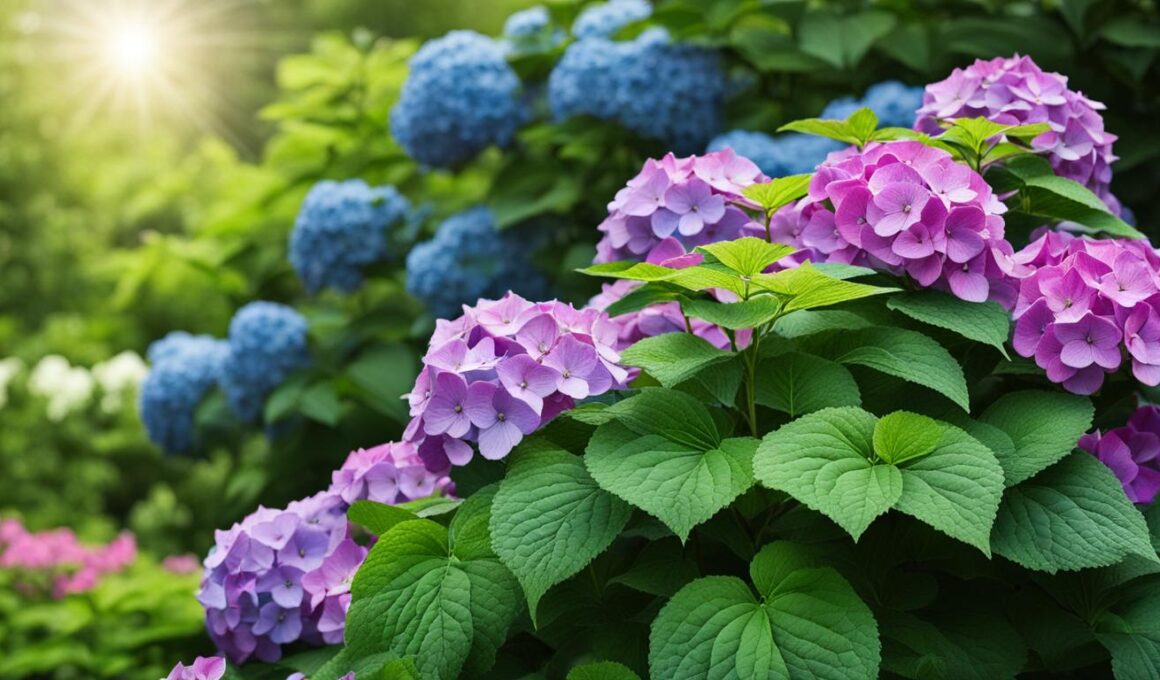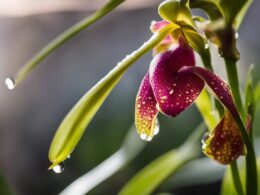When it comes to planting hydrangeas, choosing the right location is crucial for their optimal growth and the most beautiful blooms. You want to make sure you give them the best side of your house to thrive.
So, what is the best side for hydrangeas? The answer depends on various factors, including sunlight exposure and shade. The east side of your house typically offers the ideal conditions for most hydrangea varieties. In the morning, it receives gentle sunlight, and during the afternoon, it provides much-needed shade, allowing the plants to recover from the intense summer heat.
For gardeners in northern areas, the north side of the house can also be a good option, as it receives ample morning sunlight. However, factors like driveways or structures can affect the amount of sun this side gets. On the other hand, the south side of the house, with its intense sun exposure, is generally not recommended for many hydrangea varieties. Panicle hydrangeas or providing dappled shade from trees can help these varieties thrive.
The west side of the house poses the most challenges for hydrangea growth due to the intense afternoon sun. However, with extra care, panicle hydrangeas can still be planted here, ensuring they don’t dry out. Alternatively, if your garden doesn’t offer suitable conditions, planting hydrangeas in containers is a great alternative. Just make sure you choose containers based on the size of the root ball, and remember that hydrangeas still need dappled sunlight and regular watering.
Remember, each garden is unique, and the best planting spot can vary. Take the time to scout your garden beds and assess the specific conditions before planting hydrangeas. By giving them the right amount of sunlight and shade, they will reward you with their magnificent blooms.
Providing Shelter and Shade for Hydrangeas
Hydrangeas are delicate plants that require protection from strong winds and harsh weather conditions. To ensure their well-being, it’s crucial to plant them in a sheltered spot that offers wind protection and ample shade.
Wind Protection: Hydrangeas are particularly sensitive to wind and frost. To shield them from these elements, consider planting them in locations protected by larger shrubs, hedges, or walls. These natural barriers can help prevent frost damage and create a favorable microclimate for your hydrangeas to thrive.
Shade: The light situation plays a key role in the health and appearance of hydrangeas. Direct sunlight in hot and dry locations can cause their leaves to droop and wilt. Instead, opt for a spot that offers partial shade. A west-facing house wall or an area under larger shrubs with umbrella-like crowns can provide the perfect balance of sunlight and shade.
Utilizing Trees and Larger Shrubs for Shade: Trees and shrubs can serve as excellent sources of shade for hydrangeas. Consider planting Scots pines, flowering dogwoods, or larger varieties of Japanese maples near your hydrangea bed. These plants not only provide relief from direct sunlight but also add beauty and diversity to your garden landscape.
Creating Shade if Natural Options Are Limited: If your garden doesn’t offer sufficient natural shade, you can create your own shelter for hydrangeas by planting additional trees or shrubs. By doing so, you can block out excessive sunlight and provide the necessary shade for your plants to thrive. To prepare your hydrangeas for stronger sunlight, enrich the soil with humus and mulch it with peat. This will improve water retention and create a nourishing environment for your plants.
Regular Watering: Hydrangeas require regular watering, especially during dry periods. Ensure they receive adequate moisture to keep the soil consistently moist. Using tap water with a low lime content or rainwater is recommended, as hydrangeas are sensitive to lime.
With proper wind protection and shade, your hydrangeas will thrive in your garden, displaying their beautiful blooms and adding color and charm to your outdoor space.
Can I Plant Hydrangeas in Pots if I Can’t Find the Perfect Spot in my Garden?
Yes, you can plant hydrangeas in pots if you can’t find the perfect spot in your garden. Make sure the pot has good drainage, use high-quality potting mix, and water regularly. Place the pot in a spot with partial shade and protect from strong winds. Follow these hydrangea pot care tips for healthy plants.
Choosing the Right Location for Hydrangeas
When it comes to the happiness of your hydrangeas, location is key. To ensure optimal growth and thriving blooms, consider the north or south ends of your house. These spots provide a perfect balance of sunlight and shade throughout the day.
In more northern areas, the east side of your house is often the best choice. This location receives gentle morning sun and ample afternoon shade, creating the ideal conditions for your hydrangeas to flourish.
It’s important to allow your hydrangeas to recover with shade after approximately six hours of light. In southern areas, a few hours of sunshine following dawn may be sufficient. You can provide shade and alleviate the heat and brightness of direct sunlight by using cool coverings such as pergolas, trellises, or larger plants and trees.
An alternative option is to use a shade cloth, which allows some sunlight in while reducing its intensity throughout the day. Remember, each garden is unique, and the best planting spot may vary. Take the time to scout your garden beds and choose the right hydrangea species that suits your specific conditions.
Hydrangeas are adaptable and resilient. With proper care and attention, they can thrive in different locations as long as they receive the right balance of sunlight and shade. So, choose the perfect spot for your hydrangeas and watch them thrive in all their colorful glory!









